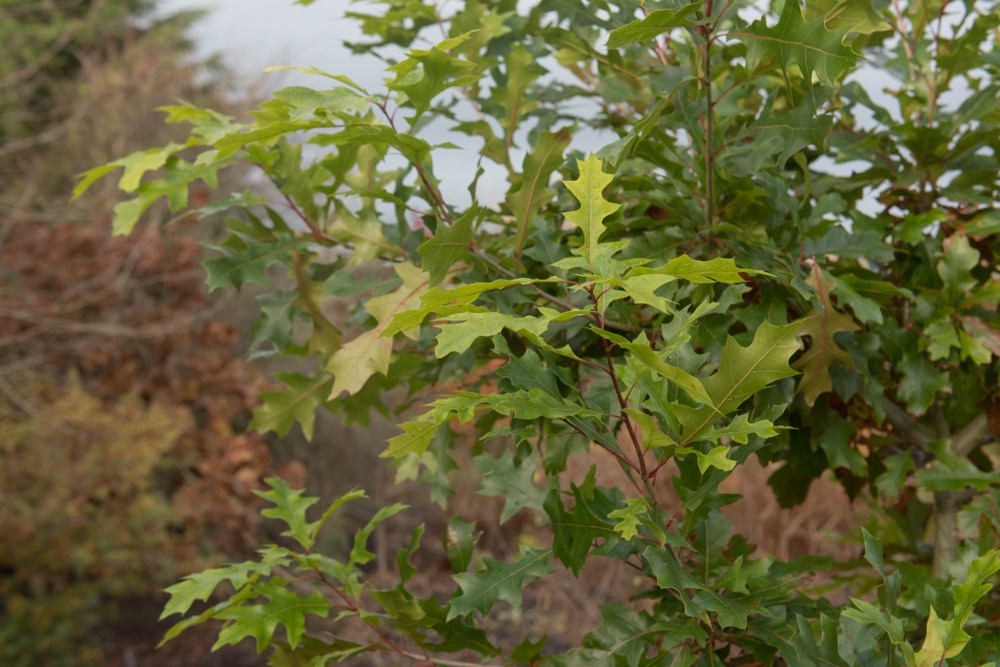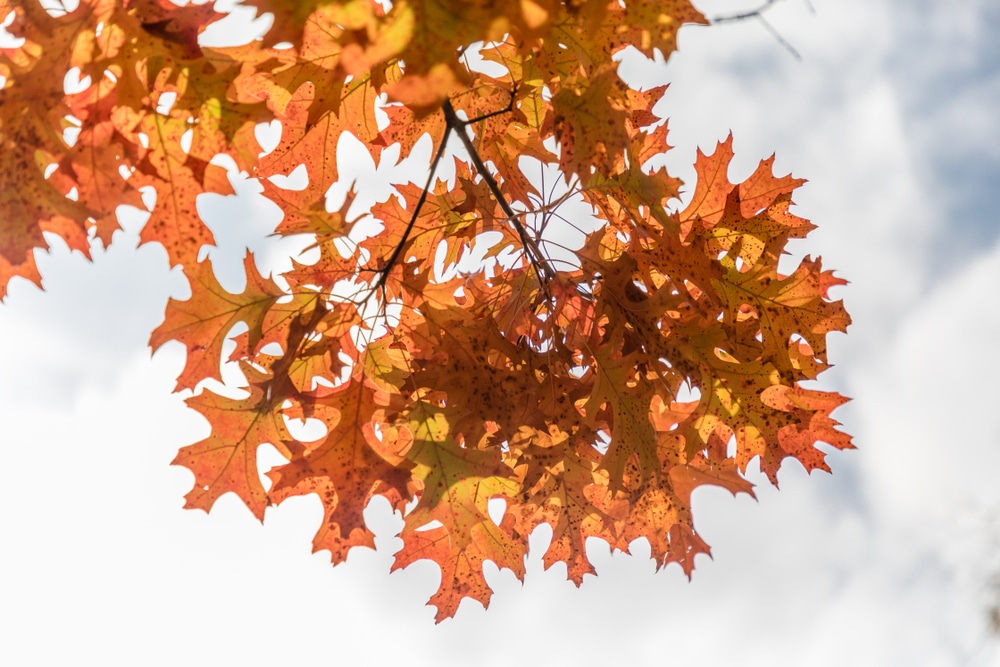Shumard oaks are large, magnificent trees that require little maintenance. They produce acorns between September and October, and their leaves change color in the fall. In fact, Shumard oaks are often the first oak trees to change color.
Many people admire the beauty of these hardwood trees, however, like all trees Shumard oaks do have some drawbacks. If you consider planting a Shumard oak tree, examine the pros and cons listed below.
Shumard Oak Tree Pros
Shumard oak trees are popular in North America, especially in urban landscapes, for several reasons.
Resiliency
This oak tree is resistant to drought and does not have to be watered regularly. Thus, it is ideal for gardeners with little time and commercial areas.
Shumard oaks can also tolerate imperfect soil. Poor soil drainage and high pH levels hardly impact them, and they can even grow in clay soil.
Health
One major concern among homeowners is attracting pests. Luckily, Shumard oaks resist most pests.
These trees are also resilient to most diseases. You are less likely to waste investment in Shumard oaks than other trees because diseases are relatively rare.
Size
Shumard Oak trees are considered medium to rapid growers. Every year, you can expect them to grow 13 to 24 inches. Anyone hoping for quick landscaping results should consider Shumard oaks because they will spread out in a short time.
Many people grow these trees for shade. They have 50 to 60-foot spreads and are shaped like pyramids. A good portion of your yard can benefit from the shade provided. Those who host frequent barbeques or enjoy spending time outside often love such trees.
Wildlife
Animal lovers are especially fond of Shumard oaks. They produce acorns, which attract squirrels, deer, and other animals. You may catch many mammals foraging for food right outside your window.
Birds also build nests in these hardwood trees, making them ideal for bird-watchers.
Longevity
Compared to most oak trees, Shumard oaks live long lives. Their lifespan averages 100 to 200 years. Multiple generations can enjoy this beautiful tree when planted outside a family home.
Ease
As discussed, Shumard Oaks require little care. Soil quality, lack of water, pests, and diseases rarely afflict them. They also transplant easily, which is perfect for new gardeners.
Shumard Oak Tree Cons
As you can see, Shumard oak trees are adored for many reasons. Still, there are a few downsides to these trees.
Sunlight Requirement
Shumard oaks thrive in full sun. They require six hours or more in direct, unfiltered sunlight daily. This can be difficult to attain in extremely rainy or cloudy climates.
Pests
Although Shumard oaks resist most pests, some can cause harm. Acorn weevils are especially dangerous for these trees. The weevils lay their eggs in acorns, and the larvae feed on the inside of these acorns. The affected acorns stop growing, but the tree itself remains healthy.
Diseases
A few diseases may also afflict Shumard oaks. A fungal disease known as oak leaf blister damages leaves and branches. You may notice small spots on the leaves, and these will cause infection. The leaves fall off, leaving behind scars on the branches.
Oak wilt is the most severe disease in Shumard oaks. Infected sap beetles or root grafts can carry the disease and kill oak trees in as little as two years.
Who Should Grow Shumard Oak Trees?
Most people, even those with minimal gardening experience, can successfully grow Shumard oak trees.
However, you should consider your location before purchasing one. They thrive in USDA hardiness zones 5 through 9, and those outside of this area may struggle to keep their trees healthy.
Additionally, oak leaf blister is most common in areas where the spring is dry and the summer is warm. This disease is not deadly, but you may need to treat your tree if you live in an area with this climate.
Conclusion
There are far more advantages to Shumard oaks than disadvantages. Many homeowners and business complexes use them when landscaping for quick results. They can expect to provide minimal care for these trees throughout their lifetime.
In rare cases, Shumard oaks may require treatment for pests and diseases, but they will live very long lives when they receive proper care. Anyone who enjoys spending warm days outside can benefit from the shade these hardwood trees provide. They may even catch a glimpse of deer foraging for acorns.
If you want to add beauty to your yard, consider a simple solution like Shumard oak trees.

